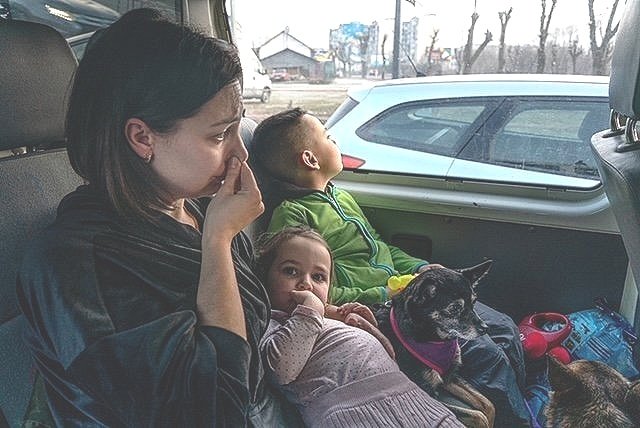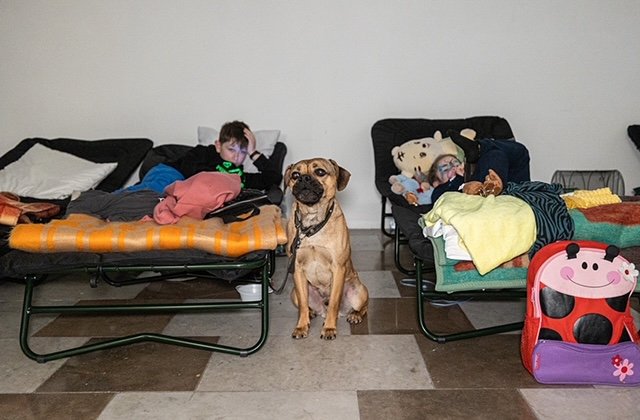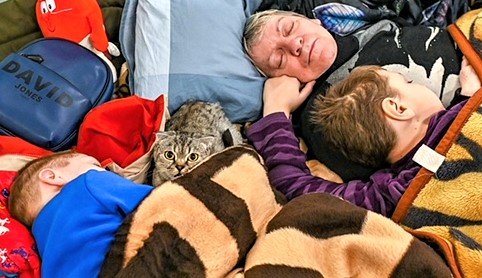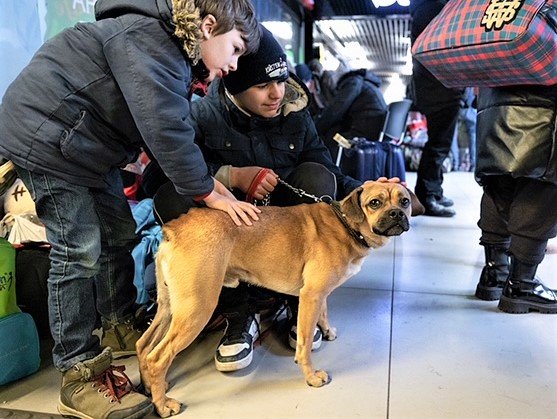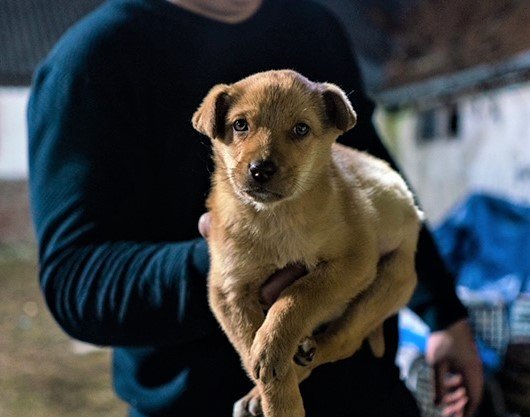By Jessica Scott-Reid
Jessica is a Canadian writer, animal advocate and plant-based food expert. Her work appears regularly in media across Canada and the US.
There are so many dimensions to the heartbreak and suffering of the people of Ukraine — losing their loved ones, their homes and their freedom — but there is one story that naturally has not received the same attention and that is their efforts to save beloved pets and other animals.
In the early days of the Russian invasion, a UK magazine published an article entitled “Ukraine’s pets are symbols of humanity in an inhumane war”. The piece describes various acts of altruism involving Ukrainians as well as outside organizations caring for companion and other animals throughout the first weeks of the brutal conflict. “In the face of Russia’s indiscriminate attack,” the article says, “Ukrainians’ care for their animals is an act of defiance.”
Since that story, many other reports have emerged of humans helping their non-human friends — small beacons of light shining rebelliously through the darkness. The war has shown how companion animals can be prioritized as family members even in the worst of times, never to be left behind. It has also illuminated the heroism of volunteers willing to risk their lives to remain with animals who can’t be moved. The war has shown us that caring for animals in time of war is not only necessary for the animals, but for humanity, too.
Above left: Alexandra Vynnysta, her daughter Diana, son Marko, and one of their dogs, huddle in the back seat of a van as they evacuate from Lviv, Ukraine, to Berlin. Alexandra is overcome with emotion as she tells her story. Not seen in the photo, but travelling with them, is their other dog and a puppy that Alexandra rescued who will be adopted once they reach Germany. Photo: Thomas Machowicz, We Animals Media
Above right: Child war refugees from Ukraine rest with their dog at a makeshift refugee camp in Katowice, Poland, before continuing their journey. Photo: Andrew Skowron, We Animals Media
In early March, photographer Louisa Gouliamaki described to NPR scenes of refugees arriving in Poland with dogs, birds and even a turtle, many of whom are featured in photos she's taken for AFP. Research has shown that animal companionship can help reduce stress, fear, anxiety and depression. Undoubtedly this is being tested and proven among the many animal guardian refugees. "For kids,” said Gouliamaki, “surely [it] is comforting [to have their pets], a piece of their normality but as well [as] something they have to take care of which give them [a] kind of strength.”
Above: A frightened cat at Kraków train station in Poland, where a family of Ukrainian refugees has stopped for a rest after fleeing their home with only what they could carry. The station has been converted to a makeshift shelter providing food, a warm place to rest, information and free train tickets to anywhere in Poland. Photo: Milos Bicanski, We Animals Media
Photos of refugees fleeing Ukraine with animals in tow are powerful images within the context of this war. One iconic photo ran as the first in a collection from Reuters entitled Dogs of war: Ukrainians flee with their canine companions. The photo depicts a man struggling to carry a large German Shepherd as he flees the Ukrainian city of Irpin on March 9, 2022, with a line of fellow refugees and another dog behind him. The photo, which was shared far and wide as a symbol of humanity amidst evil, was taken by photographer Maksim Levin. A photo of Levin himself also made the media rounds, showing him with a camera in one hand, a cat in the other, smiling near the line of separation in the Donetsk region. On April 1, Levin’s body was found. He had been shot by Russian forces.
Levin’s moving photography will live on to help tell the story of how animals were prioritized in this war.
But it has not only been companion animals who have accompanied humans on this journey of conflict. Through social media, we have also seen stories of animal shelters and sanctuaries, of animals without guardians to carry them to safety, and rescued farmed animals who escaped slaughter.
Above left: War refugees from Ukraine at the train station in Katowice, Poland. Animals at the station have been provided with veterinary treatment and food. Photo: Andrew Skowron, We Animals Media
Above right: The name and story of this dog is unknown, like most animals arriving at the Fundacja Centaurus aid camp in Poland. He is being held by Kaspar Kangsepp who, with his girlfriend Anu Sikk, drove his work van and trailer from Estonia to help rescue animals and bring supplies into Ukraine. They evacuated nine adult dogs and four puppies from the Dim Sirka shelter in Lviv, Ukraine. Photo: Thomas Machowicz, We Animals Media
A recent post shared on social media by Shelter Ugolyok, a network of animal sanctuaries and shelters across Ukraine, told the tale of a donkey undergoing extensive surgery after being injured by a bomb. The imagery is powerful, but the symbolism is perhaps even more so: a donkey, one of the most exploited and abused animals in the world, receiving this level of care in the midst of a horrific warzone -- another act of defiance and the strength of the human-animal bond exemplified by Ukrainians.
There have also been accounts of the suffering — companion animals, shelter animals, and farmed animals abandoned or left trapped, to dehydrate and starve to death. And reports of zoos running out of food and supplies to care for captive wild animals who cannot be released. However, these stories continue to be outshone by the acts of compassion and heroism.
“Efforts to safeguard Ukrainian pets are a reminder of the need to protect the connections between people and animals around the world,” writes India Bourke for The New Statesman. Indeed, the role that animals and their guardians and caretakers have played in the narrative of this war continue to showcase just how important these relationships are, and how crucial it is to prioritize them even — or especially — in the worst of times.
Sign up below for our newsletter — delivered to your inbox every month — to share insightful stories on how to have a positive impact on life on our planet.


